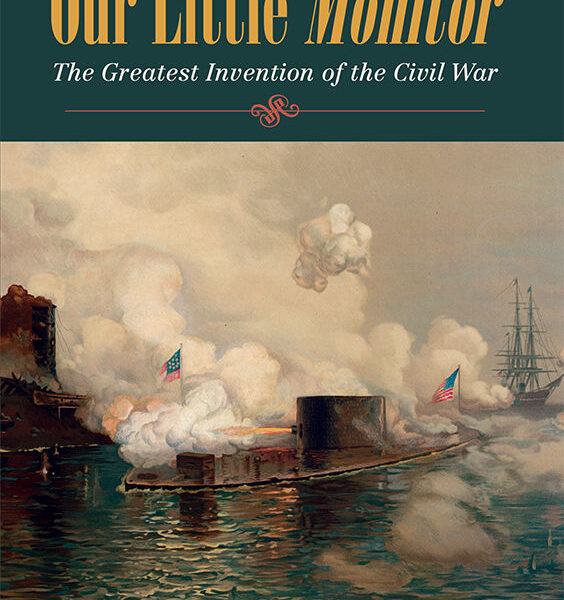Since the origins of the Civil War were rooted in discussions over western territory, one would think scholarship on the ensuing conflict might keep the American West in view. Yet traditional work on the Civil War rarely reaches beyond the Mississippi. The “West” is usually a reference to Shiloh or Vicksburg.
Yet according to Megan Kate Nelson’s The Three-Cornered War, this tale is both incomplete and misleading. The regions of New Mexico, Arizona, and Colorado, far from entirely separated, were integral to the Civil War story. Both Union and Confederate forces prized this western territory, and they sent men and resources to secure the land for their cause—only to encounter indigenous tribes anxious to retain the region for themselves. And though the battles proved to be limited in scope and few in number, these episodes did much to chart the West’s course for the postbellum period.
At first, it appeared the Confederates were destined for western glory. John Baylor and other Texas troops, led by Henry Hopkins Sibley, marched into New Mexico and claimed it for their own, mostly welcomed by inhabitants willing to cast allegiance to whichever side seemed to serve their interests. They even handedly won the first battle at Valverde in February 1862, after which they began to march north. Weeks later, however, at the Battle of Glorieta Pass, they were forced to retreat, a turn from which they never recovered. Union forces, led by Edward Richard Canby and filled with a hodgepodge of soldiers, including interracial fighters, proved victorious in the New Mexico campaign.
But even if these few episodes were limited in numbers and casualties, Nelson persuasively argues that the true “western” front lasted much longer, with broader implications. After the United States Army seized these territories from the Confederates, they soon turned their sights to the next opponents: the Native peoples who already inhabited the land. Aided by notorious “Indian killers” like Kit Carson, the army launched a series of attacks on tribes that refused to pledge allegiance to the Union. This eventually resulted in the creation of a new settlement in the eastern portion of New Mexico, Bosque Redondo, an ill-fated experiment that fell apart within a decade.
The legacies of this conflict, therefore, set the stage for later indigenous dispossession and white rule in the West. And though these themes have traditionally dominated Reconstruction historiography, Nelson explicitly uncovers their Civil War origins.
Nelson is a lucid writer with an eye for plot, character development, and suspense. Her accounts of the battlefield are as moving as her descriptions of domestic life during war are vivid. Her cast of figures, ranging from Mangas Coloradas, an Apache chief, to Louisa Canby, wife to the Union general, are fleshed-out and exhibit agency at every turn. And as the narrative moves from war to dispossession, her prose is endowed with righteous indignation as she highlights the moral irony inherent in the Union’s cause.
In many ways, Nelson’s work is an echo of another recent monograph: Kathleen DuVal’s Independence Lost: Lives on the Edge of the American Revolution (Random House, 2015). Both books took a more continental perspective on American wars; both foregrounded Native peoples and highlighted their agency in broader conflicts; both were character-driven stories meant to translate recent scholarship for a popular audience; and, finally, both challenged traditional narratives that emphasize liberty and emancipation as the predetermined outcome for America’s forward march. These books are convincing examples of today’s historiographical trends to tell a wider, more inclusive, and more sobering account of the United States’ development.
At times, it appears that Nelson’s larger historiographical claims are misdirected. I found her appeals for the West’s significance to the war itself to fall a bit short—the battles’ outcomes, despite Nelson’s gripping telling, still come off as underwhelming—yet the significance of her later focus, the contested future of Native lands, appears surprisingly underplayed. That is, I came away more convinced that Bosque Redondo, rather than Valverde or Glorieta Pass, is the nexus of this contribution.
Yet such a quibble only highlights the strength of this book: there were so many provocative ideas and convincing arguments that it is hard to focus on just one. In The Three-Cornered War, Nelson accomplishes the rare feat of providing a new perspective on the Civil War that transforms the overall orientation. Written in an accessible way, I hope it forces historians and general readers alike to rethink the place of the “West” during the Civil War and beyond.
Benjamin E. Park is Assistant Professor of History at Sam Houston State University. His most recent book is Kingdom of Nauvoo: The Rise and Fall of a Religious Empire on the American Frontier (2020).





